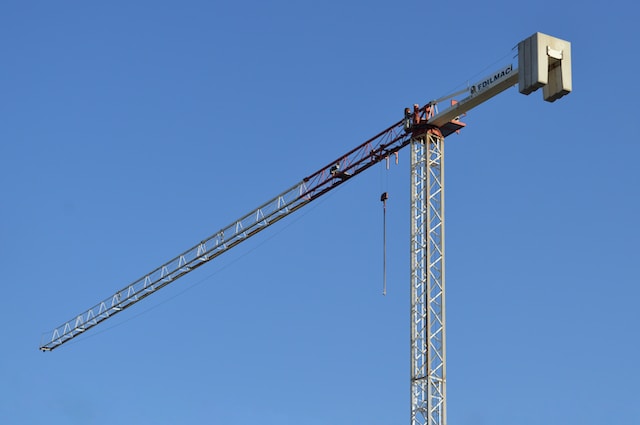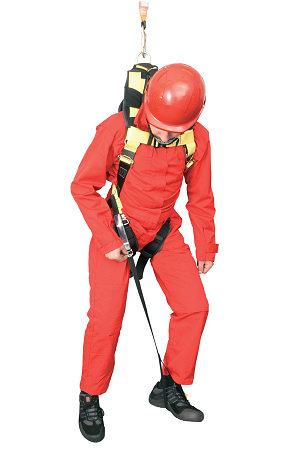
If working at height is a regular part of your job, you know that proper fall protection equipment is imperative when it comes to getting the job done efficiently and safely. The dangers of working at height do not stop once the worker’s fall-arrest equipment performs effectively to reduce the consequences of a fall from height. The worker may now be at risk of an equally life-threatening emergency; suspension trauma.
How Does Suspension Trauma Occur?
Simply put, suspension trauma refers to the loss of consciousness experienced by the hanging individual as a result of being held upright with limited movement for a prolonged period of time. As a result of the loss of consciousness occurring from motionless vertical suspension rather than physical injury, the term ‘syncope’ is also commonly used when this type of accident occurs. The causes of syncope can be classified in various ways, including vascular, cardiac, neurological and metabolic. Once an individual becomes symptomatic, several symptoms may start to appear, these include;
- Light-headedness
- Nausea
- Tingling/numbness in the arms & legs
- Faintness
- Flushing sensations
These symptoms are often referred to as ‘presyncope’ and if nothing is done to aid the suspended individual, they will eventually become in a syncope state. Suspension trauma does not occur as a result of one single factor however but is usually caused by a combination of a number factors. Commonly, however, it is caused by too much blood flowing to the legs which then gets trapped, also known as ‘blood pooling’, resulting in the brain not receiving an adequate amount of oxygen. As the human body is not designed to be in an upright position for long periods of time, it does not have the ability to ‘suck’ blood up from our legs once gravity has pulled it down. To counteract this, the body uses four major methods in order to return blood to the heart and other parts of the body, which includes the use of veins and pumping muscles. When suspension trauma arises, a number of key factors are triggered which severely impairs these methods in returning blood from the legs back to the heart and therefore impacts the amount of oxygen the brain receives. These things are:
- Body weight in the safety harness compressing veins – Pinched veins results in blood not being able to travel back to the heart and therefore becomes ‘trapped’ in your legs.
- A lack of movement – Due to the body being limiting in its movement, muscles are unable to perform in the way they’re needed to pump blood back to the heart.
- A build-up of toxins within the blood – Due to blood pooling in the legs, there is a lack of oxygen being delivered around the body, this results in organs and muscles releasing toxic waste products at dangerous levels of concentration in order to survive.
The brain has the ability to alter the body’s heart and breathing rates when it detects a problem such as blood pooling. The only problem here is that the brain cannot tell the difference between blood pooling and blood loss, so the way it reacts is the same. When blood begins to pool in the legs, the brain increases the body’s breathing and pulse rates as it thinks you are bleeding, resulting in more blood being pushed to the legs. With increased levels of blood now in the legs, the brain will eventually realise that its own supply is dropping and activates an emergency last-resort to make you faint and fall-over so that the blood can make then make its way around the body and back to the brain. You are not able to fall-over when you are hanging in a harness, however, so you become unconscious whilst remaining upright. This now places you in danger as firstly your airway is not safe in this position, which could result in suffocation and secondly, your brain still has insufficient oxygen and now no way of getting any more. The body has no backup plan so to say.
How to Treat Suspension Trauma
- The longer an individual is left suspended, the greater the chances are of the above symptoms and resulting effects occurring. These are relieved when the individual starts to recline, so the individual should be removed from an upright position as quick as possible, especially if they are in a motionless state.
- If the individual is conscious, they should be encouraged to gently exercise their legs in order to stimulate blood circulation and increase the lowered blood pressure.
- If the individual is not conscious then it is preferable to elevate the lower limbs slightly.
- If there is any doubt regarding the individual’s state or the period of suspension, alert medical agencies immediately.
How Can You Prevent Suspension Trauma?
As is the same with all accidents, prevention is better than cure. When working in an area or a job where the element of suspension is possible, ensure you have an adequate rescue plan in place in order to receive a quick and safe rescue. An important factor to consider is the type of safety harness that is used as harnesses that restrict movement and tighten the legs when hanging can result in symptoms occurring much faster. Here at SLG, we strive to prevent any such accidents from occurring and want all workers to be as safe as possible if such situations do happen. Our Suspension Trauma Strap is designed to allow a worker to stand up while suspended, assisting normal blood flow and increase the amount of time that can be spent safely awaiting rescue. To view our full range of Trauma Straps, click here.

If you have any questions or queries regarding height safety or our range of Trauma Straps then please feel free to contact us by calling 0808 123 69 69 or emailing us at sales@safetyliftingear.com today!

